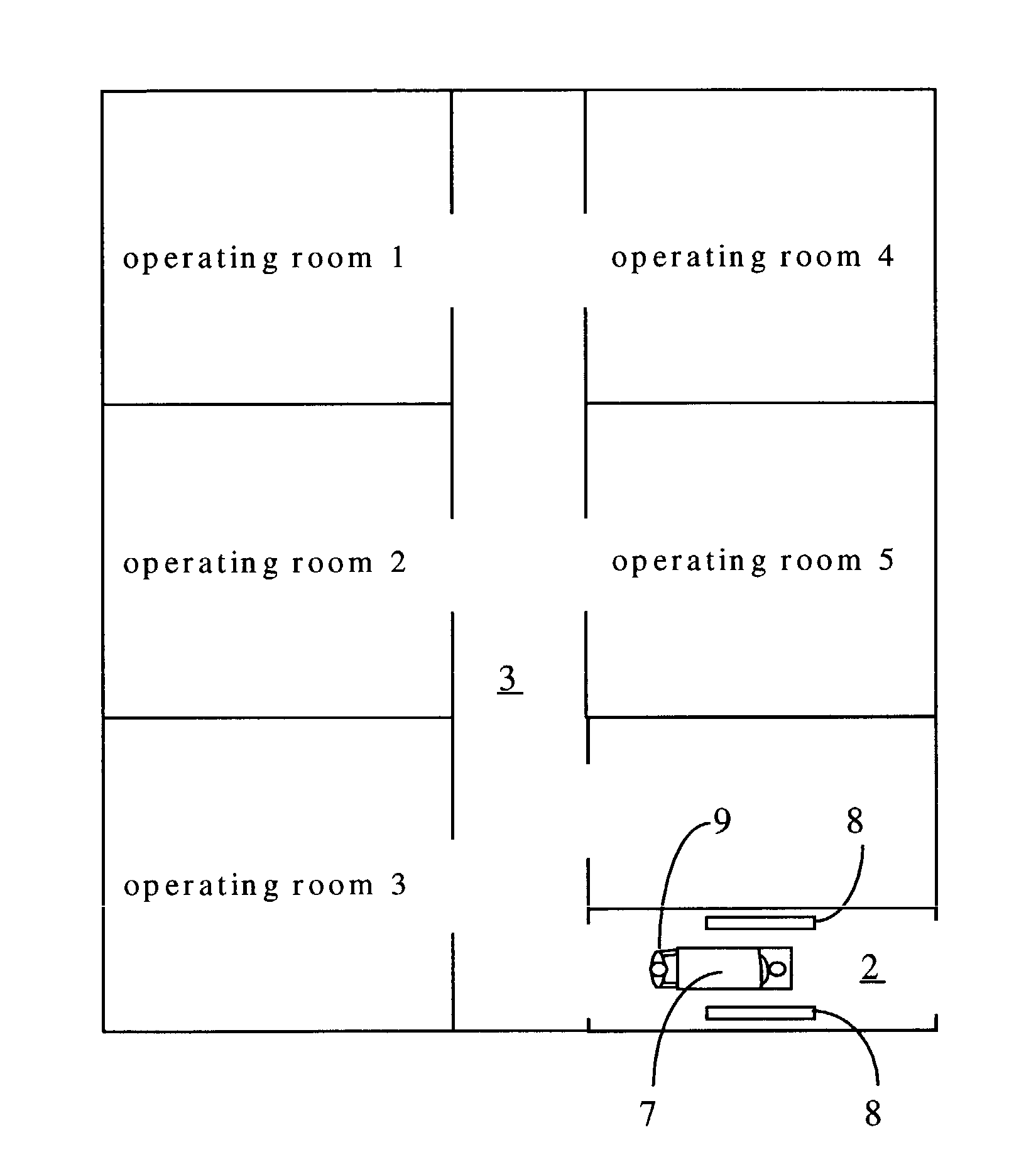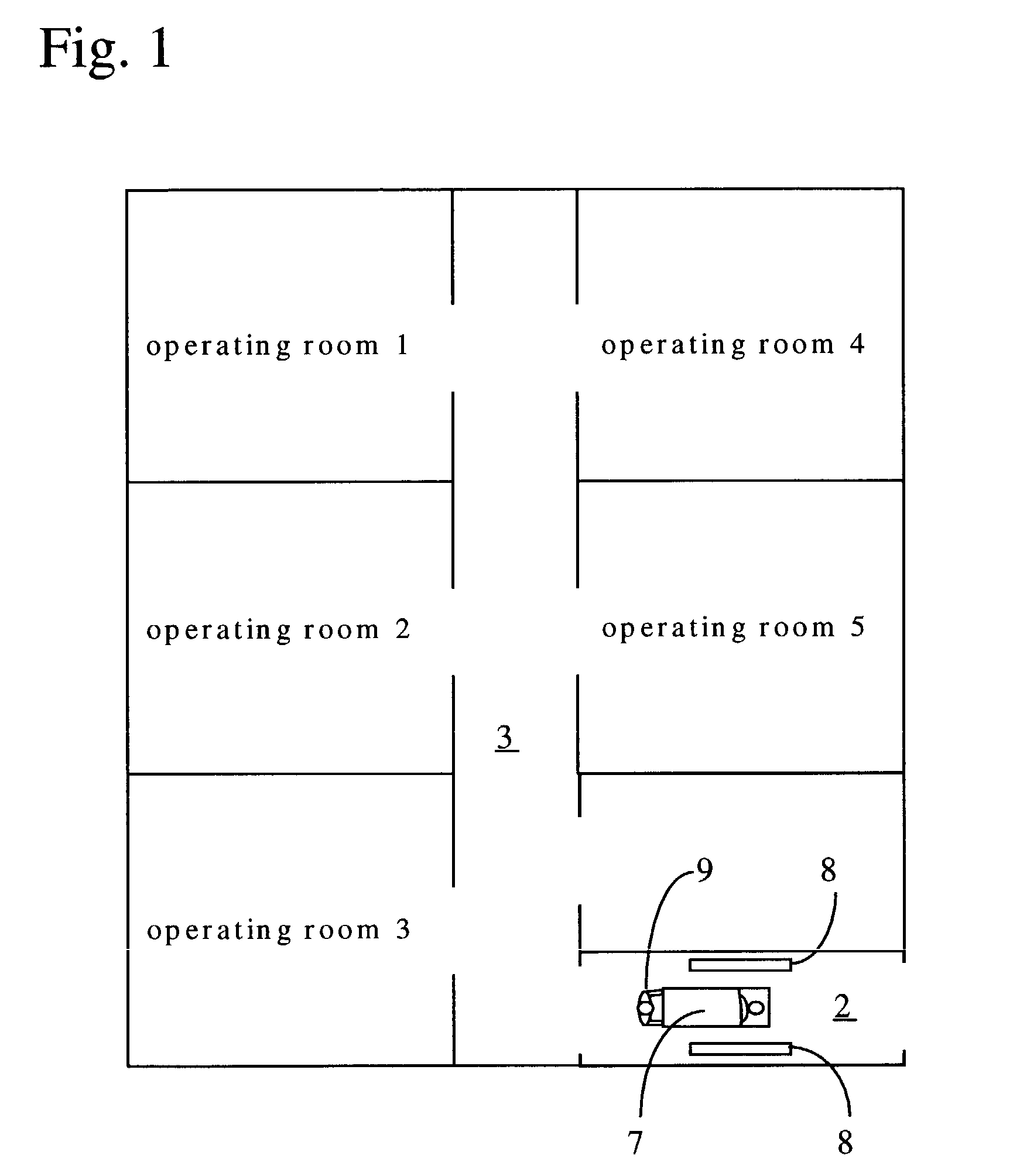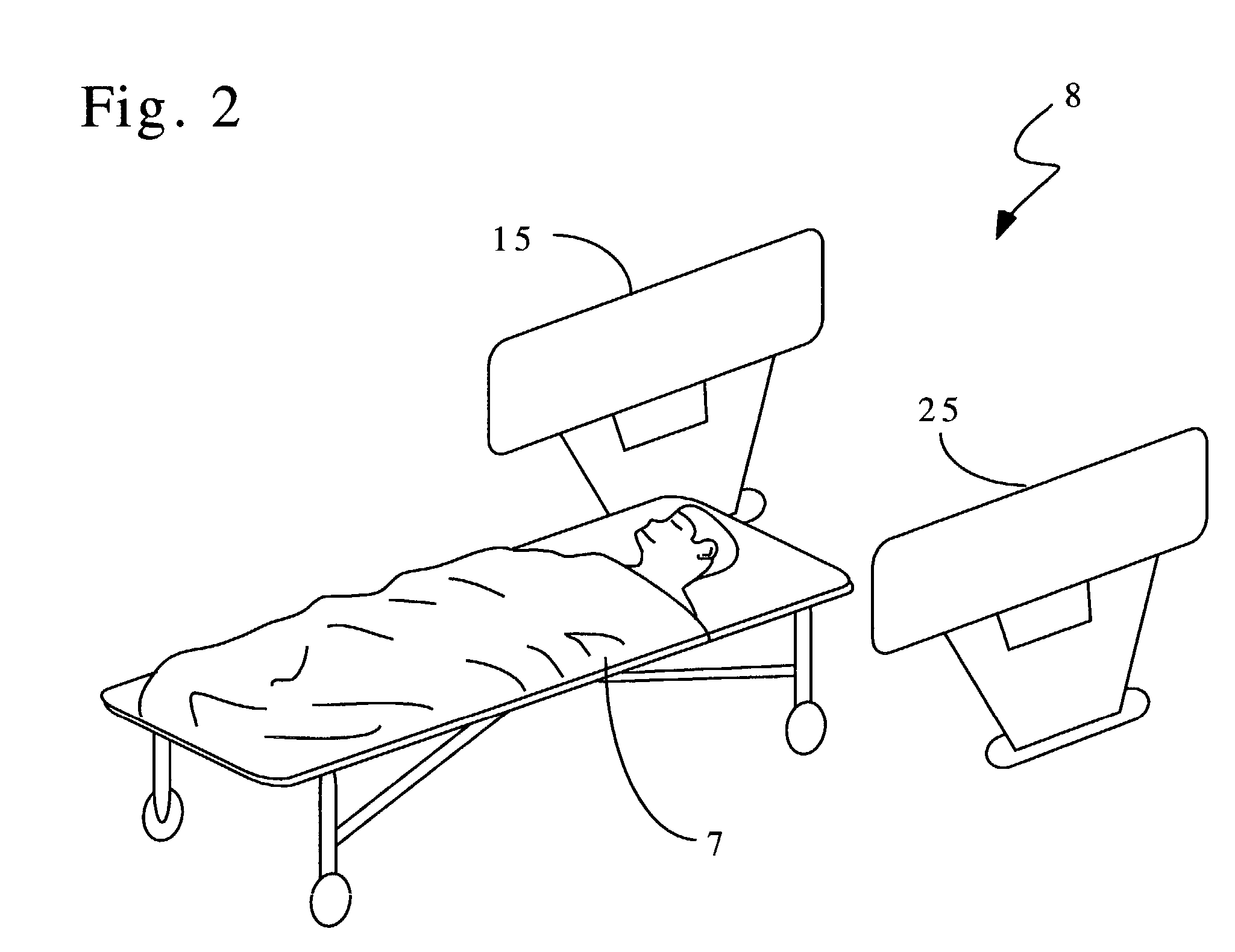Surgical implement detection system
a detection system and surgical implement technology, applied in the field of surgical implement detection system, can solve the problems of uncontrollable surgical procedure uncontrollable surgical procedure, etc., and achieve the effects of preventing the disruption of the functioning of essential equipment, minimizing the risk of infection, and optimizing detection accuracy
- Summary
- Abstract
- Description
- Claims
- Application Information
AI Technical Summary
Benefits of technology
Problems solved by technology
Method used
Image
Examples
Embodiment Construction
[0033]Referring to the drawings, there is shown in FIG. 1 a system for detection of surgical implements. An overhead view of a typical operating room complex in a hospital is depicted. Entrance hall 2 leads into a common hall 3 servicing five operating rooms. Entrance hall or passageway 2 is provided with a surgical implement detector 8. A post-operative patient on a gurney 7 is pushed by an attendant 9 through a detector 8. FIG. 2 is a perspective view depicting a post-operative patient on a gurney 7 entering a detector 8. Detector 8 is comprised of an interrogating means 15 and a receiving means 25.
[0034]Referring to FIG. 3, a marker 18 is secured to a surgical implement, such as a sponge 20, positioned within a surgical wound 22 within patient 21. Marker 18 is characterized by resonance at a preselected resonance frequency. It is driven by the interrogating field produced by detector 8 into resonance at the preselected frequency, by detector 8, causing marker 18 to undergo a larg...
PUM
 Login to View More
Login to View More Abstract
Description
Claims
Application Information
 Login to View More
Login to View More - R&D
- Intellectual Property
- Life Sciences
- Materials
- Tech Scout
- Unparalleled Data Quality
- Higher Quality Content
- 60% Fewer Hallucinations
Browse by: Latest US Patents, China's latest patents, Technical Efficacy Thesaurus, Application Domain, Technology Topic, Popular Technical Reports.
© 2025 PatSnap. All rights reserved.Legal|Privacy policy|Modern Slavery Act Transparency Statement|Sitemap|About US| Contact US: help@patsnap.com



